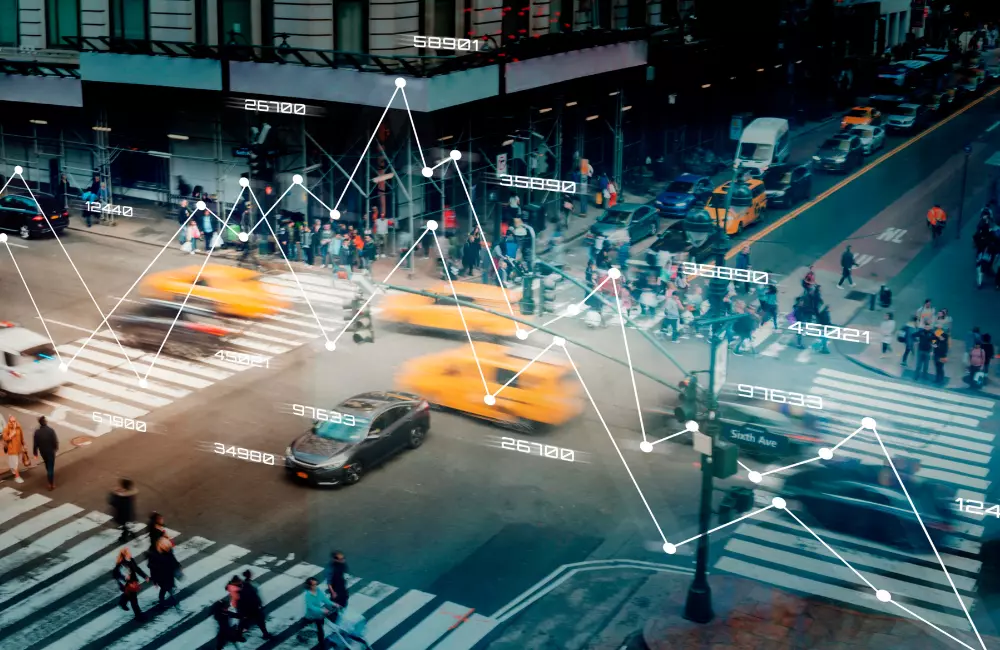
According to data provided by the United Nations Population Fund (UNFPA), in 2023 the world’s population reached 8,045 million, with India (1,429 million), China (1,426 million), and the United States of America (340 million) being the most populated countries.
With the unstoppable growth of the world’s population, it is becoming increasingly necessary to implement strategies to combat environmental deterioration and reduce the human footprint on the natural environment. Sustainable and optimized cities are precisely part of these strategies, which thanks to the implementation of technology have managed to position themselves as the solution to the remarkable damage that our home planet Earth has suffered due to the excessive use of natural resources and urbanization.

What are smart cities or cities 4.0?
They are those that have relied on information and communication technologies (ICT) and big data to efficiently and sustainably manage everything from the operation of transportation to the use of energy or water resources, public spaces or communication with their inhabitants. The goal: is to reduce energy consumption, reduce CO2 emissions, and increase the well-being of citizens.
Characteristics of smart cities:
- It has Sustainable Development Goals as its main pillar.
- Use of Information and Communication Technologies (ICT).
- Automation and control of buildings.
- Urban mobility and sustainable public transport.
- Efficient urban planning.
- Intelligent solid waste management.
- Improvement of environmental sustainability.
- Concern for the social environment.
- Technologies applied to education.
- Technologies applied to health.
- Electronic commerce system.
- Transparency between governments and citizens.
- Shared data (Open data).
Some examples of smart cities:
London
Has implemented different strategies such as the London Development Database (LDD), a collaborative project for managing construction permits and their different phases in real-time, which can be accessed by any citizen through the web. Also, smart energy meters, and the creation of Heathrow Pods, driverless vehicles that interconnect the city with the airport.
New York
A city that has implemented equal access to technology through the LinkNYC network, which replaces telephone booths with fast and free Wi-Fi access points to find out about city services. As for the traffic that plagues the city due to its nearly 8.5 million inhabitants, the Big Apple has implemented the Midtown in Motion program to manage rush hour downtown. Using speed sensors and a data center managed by urban traffic engineers, a 10% improvement in travel times has been achieved. Water supply has also been managed through systems that centralize consumption data in homes, allowing users to know their readings in real-time and pay their bills online.
Shanghai
Shanghai: It stood out in 2022 for the creation of the2 Shanghai’s Citizen Cloud, a data platform where you can find more than 1,200 services that the city’s citizens may need. This system is the best way to contact the city government as well.
Seoul
This city has been characterized for years for being more advanced in terms of technological intelligence to improve the lives of its citizens, and its most recent implementation has been the autonomous robot patrols.
Barcelona
Uses a renewable transport system that works with diagonal routes through the city. In addition, public lighting is LED and waste is sent in intelligent containers.
Beijing
From virtual cards to manage all citizens’ documents, public transport payments through telephones, to the closure of the most polluting factories, are some of the smart city strategies implemented in this city.
Some other cities that are betting on improvement and sustainable development programs are Amsterdam, Paris, Copenhagen, Berlin, Singapore and of course Dubai.
It is estimated that by 2050 the world population will reach 9 billion inhabitants, so more and more cities must solve issues of vital importance such as pollution reduction, energy efficiency, as well as the correct and equitable water supply, and migrate to smart city solutions.








